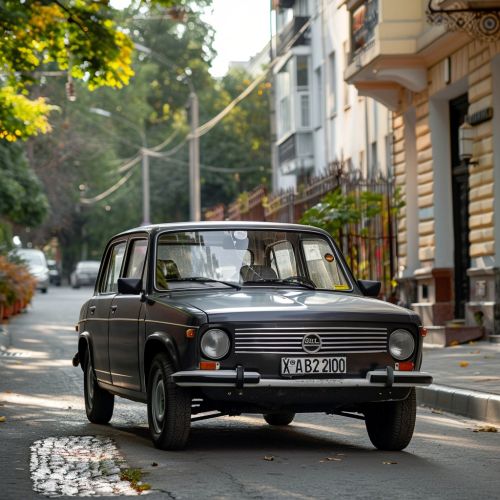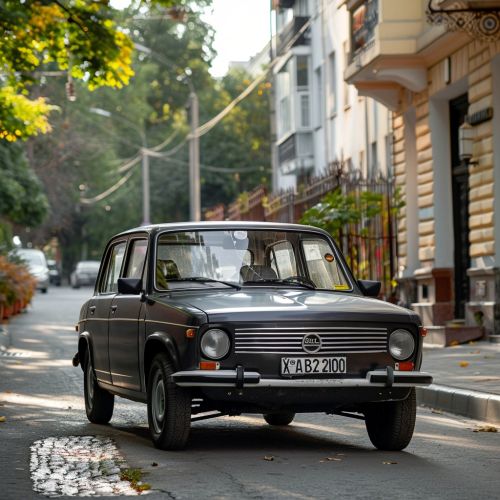Lada vaz
History
The Lada VAZ, also known as the VAZ-2101, is a series of compact cars built by the Soviet and later Russian car manufacturer AvtoVAZ, under the Lada brand. The VAZ-2101 was introduced in 1970 and was based on the Fiat 124, which was named the European Car of the Year in 1967. The collaboration between Fiat and the Soviet Union was part of a broader effort to modernize the Soviet automotive industry. The VAZ-2101 and its derivatives became the most popular cars in the Soviet Union and later Russia, with millions of units produced and sold.
Design and Engineering
Exterior
The VAZ-2101 featured a classic, boxy design typical of the 1970s. The body was made of steel, with a focus on durability and simplicity. The car had a front-engine, rear-wheel-drive layout, which was standard for the time. The design was slightly modified from the original Fiat 124 to better suit the harsher conditions of Soviet roads. This included reinforced suspension, a higher ground clearance, and thicker body panels.


Interior
The interior of the VAZ-2101 was utilitarian, with basic features and minimalistic design. The dashboard was simple, with analog gauges and basic controls. The seats were upholstered in vinyl, and the car lacked many of the amenities found in Western cars of the same era. However, it was designed to be easy to maintain and repair, which was crucial for its target market.
Engine and Performance
The VAZ-2101 was powered by a 1.2-liter inline-four engine, which produced 64 horsepower. This engine was a modified version of the Fiat 124's engine, adapted to run on lower-octane fuel available in the Soviet Union. The car had a four-speed manual transmission, with a top speed of around 87 mph (140 km/h). The VAZ-2101 was known for its reliability and ease of maintenance, which contributed to its popularity.
Variants and Derivatives
VAZ-2102
The VAZ-2102 was the station wagon version of the VAZ-2101. It featured a larger cargo area and was designed to carry more passengers and goods. The VAZ-2102 retained the same engine and mechanical components as the VAZ-2101 but offered more versatility for families and businesses.
VAZ-2103
The VAZ-2103 was an upgraded version of the VAZ-2101, introduced in 1972. It featured a more powerful 1.5-liter engine, producing 75 horsepower. The VAZ-2103 also had a more luxurious interior, with additional features such as a tachometer and improved upholstery. The exterior design was slightly updated, with new headlights and a revised grille.
VAZ-2106
The VAZ-2106, introduced in 1976, was another evolution of the VAZ-2101. It featured a 1.6-liter engine, producing 80 horsepower. The VAZ-2106 had further improvements in terms of comfort and safety, including better brakes and a more refined suspension system. It became one of the most popular models in the Lada lineup.
Impact and Legacy
The Lada VAZ series had a significant impact on the automotive industry in the Soviet Union and later Russia. It provided affordable and reliable transportation for millions of people and played a crucial role in the modernization of the Soviet automotive industry. The VAZ-2101 and its derivatives were exported to many countries, including Western Europe, where they were marketed under the Lada brand.
The VAZ-2101 also influenced the design and development of other Soviet cars, such as the Moskvitch and the GAZ Volga. Its simple and robust design made it a favorite among car enthusiasts and collectors, and it remains a symbol of Soviet engineering.
